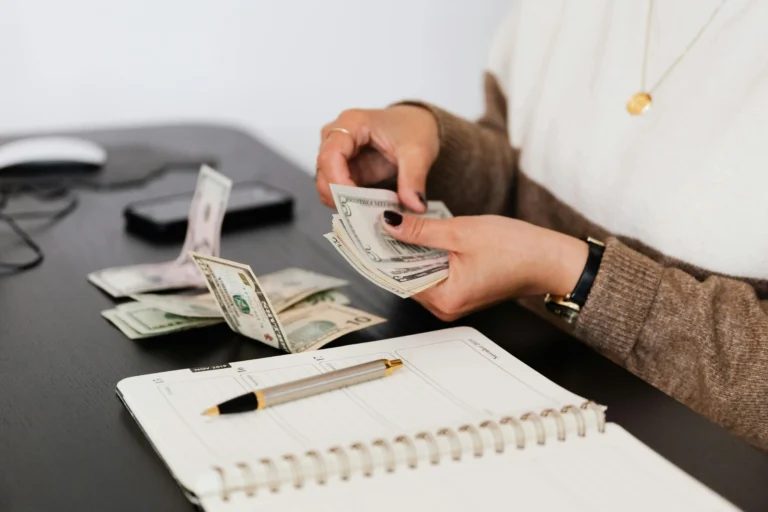Your Financial Safety Net Starts with a Single Dollar
Table of Content
Table of Contents
Introduction: The “Why” – Beyond Just “Unexpected Expenses”
Start an emergency fund today and protect yourself from financial disasters. Picture this: Sarah, a 28-year-old marketing professional, was living paycheck to paycheck when her car broke down on a Tuesday morning. The repair bill? $1,200. Without an emergency fund, she had to choose between putting the expense on a high-interest credit card or asking family for help. The stress kept her awake for weeks.
Sarah’s story isn’t unique. According to the Federal Reserve’s 2023 Report, nearly 37% of Americans would struggle to cover a $400 emergency expense. This reveals a troubling reality about financial preparedness.
An emergency fund is a dedicated savings account specifically designed to cover unexpected expenses. Think of it as your financial safety net—money set aside for life’s curveballs that you hope you’ll never need but are grateful to have when disaster strikes
When you start an emergency fund, you’re creating:
- Peace of mind: Knowing you can handle unexpected expenses reduces daily financial stress
- Better decision-making power: Financial security allows you to make choices based on what’s best for you
- Protection for your long-term goals: Without an emergency buffer, unexpected costs often derail retirement savings or debt payoff strategies
- Reduced reliance on debt: Emergency funds prevent high-interest credit card accumulation during crises
Addressing Common Hesitations
“I have no money to save” and “It seems overwhelming” are the most common objections about saving money for emergencies. If these thoughts resonate with you, this guide will show you how to start an emergency fund with no money using manageable, achievable steps.
Understanding Your “Why”: Personalizing Your Emergency Fund Goal
Before diving into mechanics, connect your emergency fund to broader life goals. For those exploring financial goals for beginners, an emergency fund isn’t just another financial to-do item—it’s the foundation that makes all other goals possible.
Consider how an emergency fund supports your dreams:
- Career flexibility: With financial security, you can take calculated risks like changing jobs or starting a business
- Relationship stability: Financial stress is a leading cause of relationship conflict
- Health and wellness: You can afford unexpected medical expenses without compromising health decisions
- Family security: If you have dependents, an emergency fund protects their stability
Quick Personal Risk Assessment
To personalize your goal, assess your risk factors:
High-Risk Indicators:
- Unstable employment or freelance work
- Single-income household
- Chronic health conditions
- Aging home or unreliable transportation
- Limited insurance coverage
The more risk factors you have, the larger your emergency fund should eventually become.
How Much Do You Really Need?
How much money do you need to start an emergency fund? This question keeps many people from taking action because they focus on the final destination rather than the first step. The truth is, any amount is better than nothing.
The Standard Advice: 3-6 Months of Expenses
Financial experts recommend saving three to six months of living expenses:
- Three months provides a buffer for most temporary setbacks
- Six months offers protection for serious situations like extended unemployment
To calculate your target, add up essential monthly expenses:
- Housing (rent/mortgage, utilities, insurance)
- Food and groceries
- Transportation
- Insurance premiums
- Minimum debt payments
- Basic personal care
Example Calculation:
- Total monthly essentials: $2,500
- 3-month emergency fund goal: $7,500
- 6-month emergency fund goal: $15,000
The Tiered Approach: Building in Stages
Rather than feeling overwhelmed, adopt a tiered approach:
| Tier | Amount | Purpose | Timeline |
|---|---|---|---|
| Starter Fund | $500-$1,000 | Minor emergencies | 2-4 months |
| Intermediate Fund | 1-2 months expenses | Major repairs, job loss buffer | 6-12 months |
| Full Fund | 3-6+ months expenses | Extended emergencies | 12-24 months |
What is a good starter emergency fund? Begin with $500-$1,000. This covers most minor emergencies without feeling impossible to achieve.
Step-by-Step: How to Start Your Emergency Fund (Even with No Money)
The biggest barrier to starting an emergency fund isn’t lack of income—it’s lack of awareness about where money goes. Even if you feel financially stretched, most people can find small amounts to redirect toward savings.
Step 1: Track Your Spending for One Week
Before you can start an emergency fund with no money, understand your current money flow. For one week, write down every expense using a smartphone app or simple notebook.
Step 2: Create a Bare-Bones Budget
After tracking spending, identify absolute essentials versus discretionary expenses. Look for small amounts you can redirect:
Common Areas to Find Money:
- Dining out → Cook one extra meal per week
- Subscription services → Cancel unused memberships
- Brand name products → Switch to generic alternatives
- Entertainment → Find free alternatives
Even $20-50 per month makes a difference—that’s $240-600 per year toward your emergency fund.
Step 3: Set Small, Achievable Goals
Don’t aim for $10,000 immediately. Instead, set micro-goals:
- Week 1: Save $10
- Month 1: Save $50
- Month 3: Save $200
- Month 6: Save $500
Small wins build momentum and create lasting habits.
Step 4: Automate Your Savings
How to start an emergency fund quickly starts with automation. Set up an automatic transfer from checking to savings on payday.
Automation Benefits:
- Removes temptation to spend the money first
- Creates consistency without requiring willpower
- Builds the habit gradually
Start with whatever feels manageable—even $25 per paycheck adds up to $650 per year.
Step 5: Capture Windfalls
Direct unexpected money straight to your emergency fund:
- Tax refunds: Average refund is over $2,800
- Work bonuses: Even small performance bonuses count
- Cash gifts: Birthday money, holiday gifts
- Side hustle income: Freelance work, selling items online
Treat windfalls as “emergency fund boosters” rather than spending money.
Step 6: Boost Your Savings Rate
If you want to start an emergency fund quickly, consider these strategies:
30-Day No-Spend Challenge: Only spend on necessities for 30 days, directing all saved money to your fund.
Sell Unused Items: Electronics, clothes, furniture—use Facebook Marketplace or eBay.
Temporary Side Hustles: Food delivery, freelance services, seasonal work.
The $5 Bill Strategy: Save every $5 bill you receive—it adds up surprisingly quickly.
Read: 15 Habits of Rich People: Your Blueprint for Financial Success
Where to Keep Your Emergency Fund
Once you start saving, you need to decide where to keep your emergency fund. The ideal storage balances safety, liquidity, and growth.
High-Yield Savings Accounts: The Gold Standard
High-yield savings accounts are typically the best choice for emergency funds:
Pros:
- FDIC insured up to $250,000—your money is protected
- Higher interest rates than traditional savings (often 4-5% as of 2025)
- Easy access through online banking
- No investment risk—your principal is guaranteed
What to Look for:
- FDIC or NCUA insurance (non-negotiable)
- Competitive APY
- No monthly maintenance fees
- Low minimum balance requirements
- Easy online access
Money Market Accounts: A Middle Ground
Money market accounts offer slightly higher interest rates while maintaining liquidity:
Benefits:
- Often higher APY than regular savings
- FDIC insured
- May include check-writing privileges
Drawbacks:
- Higher minimum balance requirements
- Limited monthly transactions
What NOT to Do
Avoid These Common Mistakes:
Checking Accounts: Too accessible—emergency money gets mixed with daily spending.
Investment Accounts: Stocks and mutual funds are too volatile. You need guaranteed access to your full amount.
Cryptocurrency: Extreme volatility makes it unsuitable for emergency fund storage.
Emergency Fund vs Savings Account
People often ask about emergency fund vs savings account strategies:
- Emergency Fund: Dedicated to unexpected expenses only, kept in highly liquid, safe accounts
- General Savings: Money for planned expenses that can be kept in various account types
You can use the same account type but keep them mentally separate to prevent using emergency money for non-emergencies.
Maintaining and Using Your Fund Wisely
When to Use Your Emergency Fund
True Emergencies Include:
- Job loss or significant income reduction
- Major medical expenses not covered by insurance
- Essential home repairs (furnace, roof, plumbing)
- Critical car repairs needed for transportation
- Family emergencies requiring financial support
NOT Emergencies:
- Vacations or travel opportunities
- Shopping sales or “great deals”
- Home renovations or upgrades
- New technology purchases
The 24-Hour Rule: If unsure whether something qualifies as an emergency, wait 24 hours before accessing the fund.
How to Replenish After Use
When you use your emergency fund:
- Assess immediately: Determine how much you used and set a replenishment timeline
- Adjust budget temporarily: Reduce discretionary spending until the fund is restored
- Direct additional income: Use extra earnings toward rebuilding
- Rebuild gradually: Don’t attempt to replace large amounts all at once
Overcoming Common Challenges
“What if I have debt?”
The answer depends on your debt’s interest rate:
High-Interest Debt (Credit cards):
- Build a small starter fund ($500-1,000)
- Focus intensively on paying off high-interest debt
- Resume building full emergency fund after eliminating high-interest debt
Moderate-Interest Debt (Auto loans, student loans):
- Build emergency fund and pay debt simultaneously
- Split extra money between debt payments and emergency savings
“What if I get discouraged?”
Stay motivated by:
- Celebrating small wins—acknowledge every $100 milestone
- Using visual tracking like progress charts
- Focusing on security, not speed
- Finding an accountability partner
“Should I invest my emergency fund?”
The short answer: No. Your emergency fund’s primary purpose is security and accessibility, not growth. Once you have 3-6 months saved, you can direct additional savings toward investments.
Real-Life Success Story
Maria’s $50 Beginning: Maria, a single mother and teacher, felt overwhelmed by saving thousands. She started with just $50 per paycheck, sold unused items, and used her tax refund to boost savings. After 18 months, she had $2,400 saved. When her car needed $800 in repairs, she had the money available without using credit cards. The peace of mind, she said, was worth more than the money itself.
Taking Action: Your Emergency Fund Blueprint
Building an emergency fund creates financial resilience that supports every aspect of your life. Whether you start an emergency fund with $20 or $200, the most important step is beginning.
Your Action Plan:
This Week:
- Track all expenses for 7 days
- Open a separate high-yield savings account
- Set up automatic transfer for your chosen amount
- Calculate your emergency fund goal
This Month:
- Complete your first $50-100 in emergency savings
- Identify one area to consistently redirect money to savings
- Create clear criteria for what qualifies as an emergency
Next 3 Months:
- Build your starter emergency fund of $500-1,000
- Celebrate progress and adjust savings rate if possible
- Review and refine your approach
Remember, saving money for emergencies is one of the most powerful financial tools available, regardless of income level. Every dollar you save is a dollar of security, peace of mind, and financial freedom.
Read: 15 Habits of Rich People: Your Blueprint for Financial Success
Start Today
Ready to transform your financial security? Start your emergency fund today—not tomorrow, not next week, but right now.
Take these immediate steps:
- Open a high-yield savings account this week
- Set up your first automatic transfer for any amount you can afford
- Track your spending to find money to redirect toward savings
Your journey to financial peace of mind starts with a single dollar. The best time to start was yesterday. The second-best time is today.
Your emergency fund is the foundation of lasting financial security. Start building yours now.




